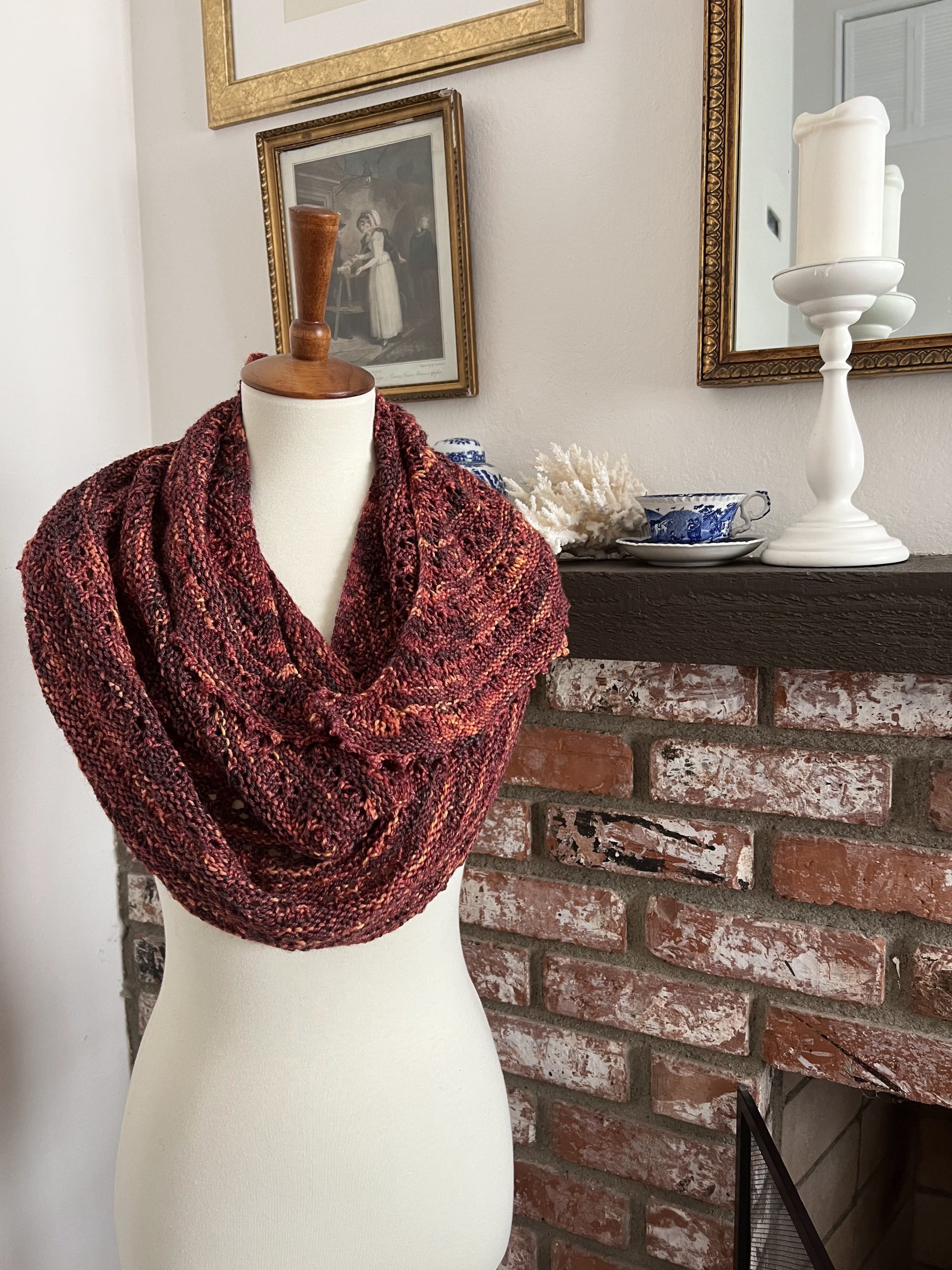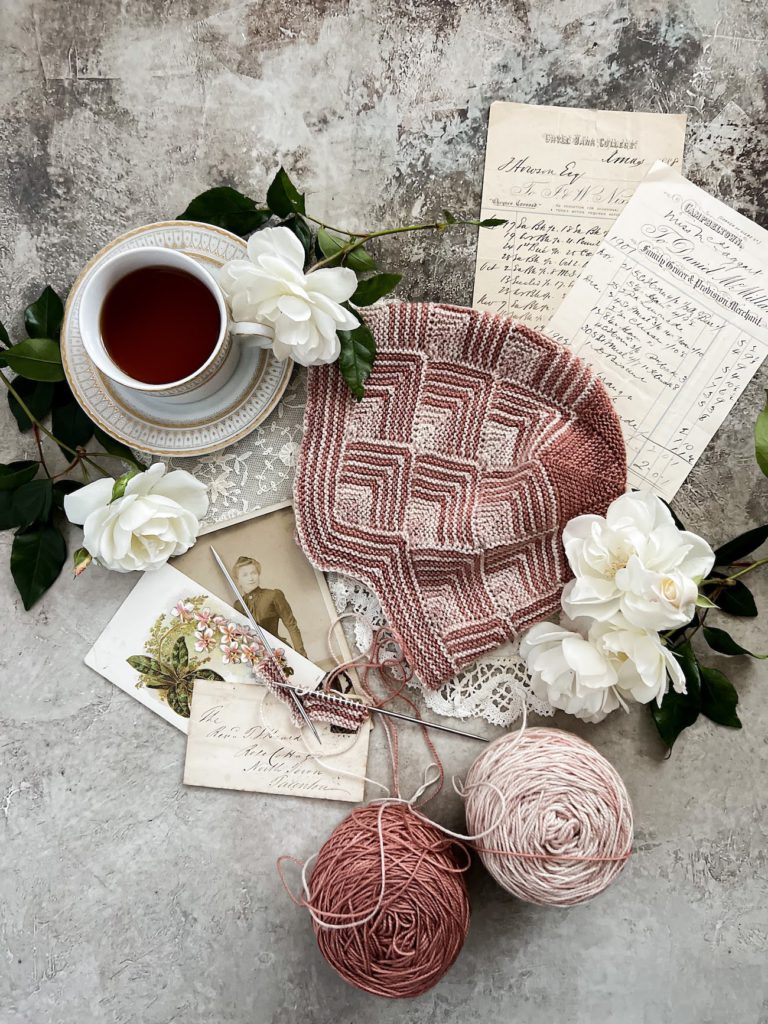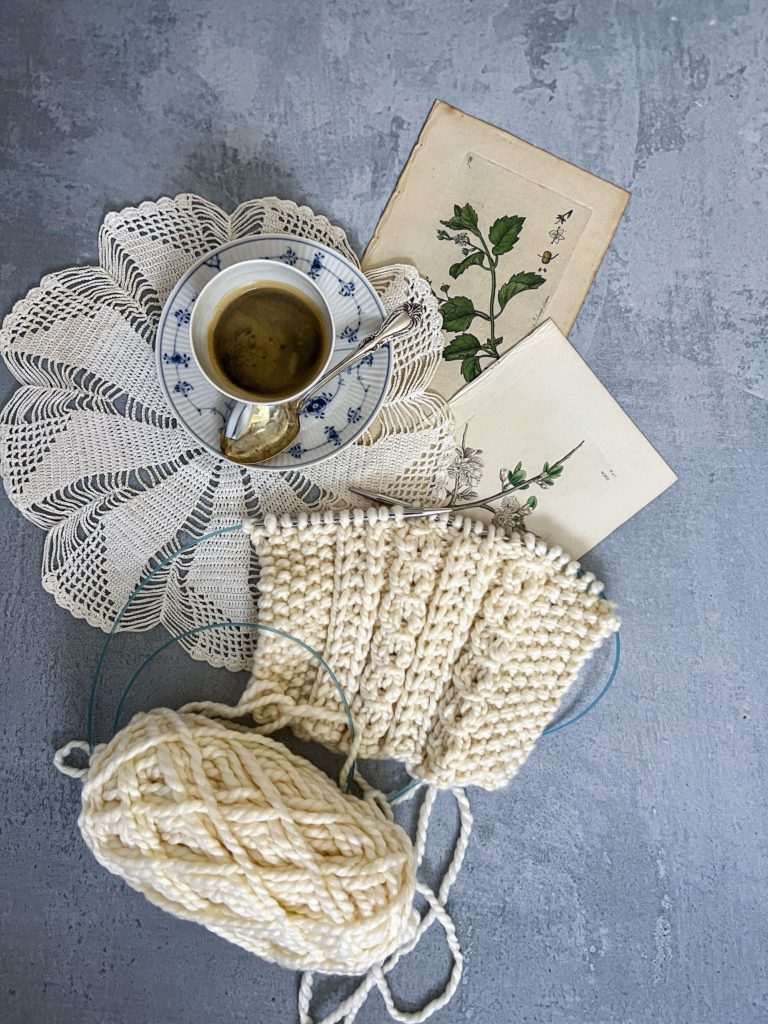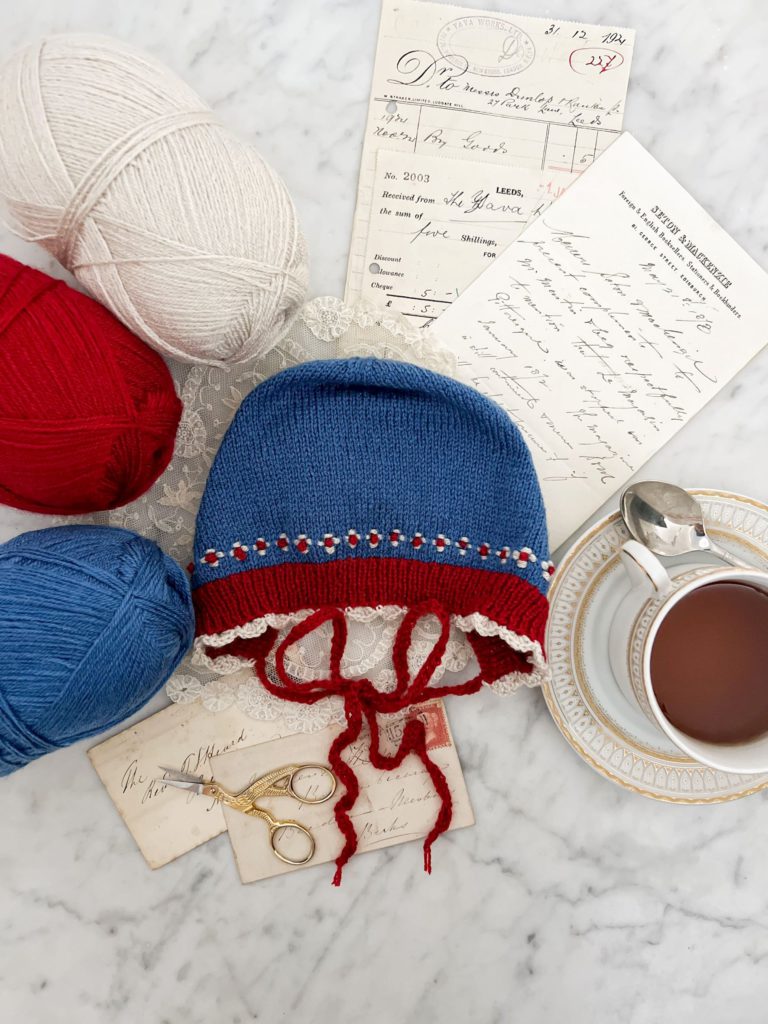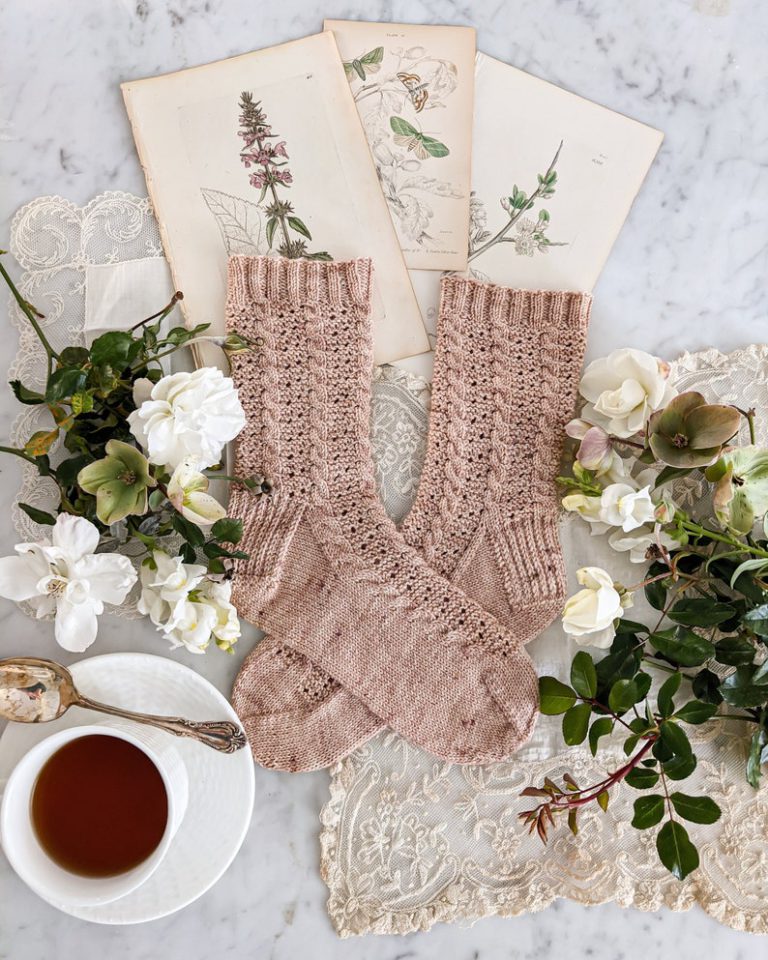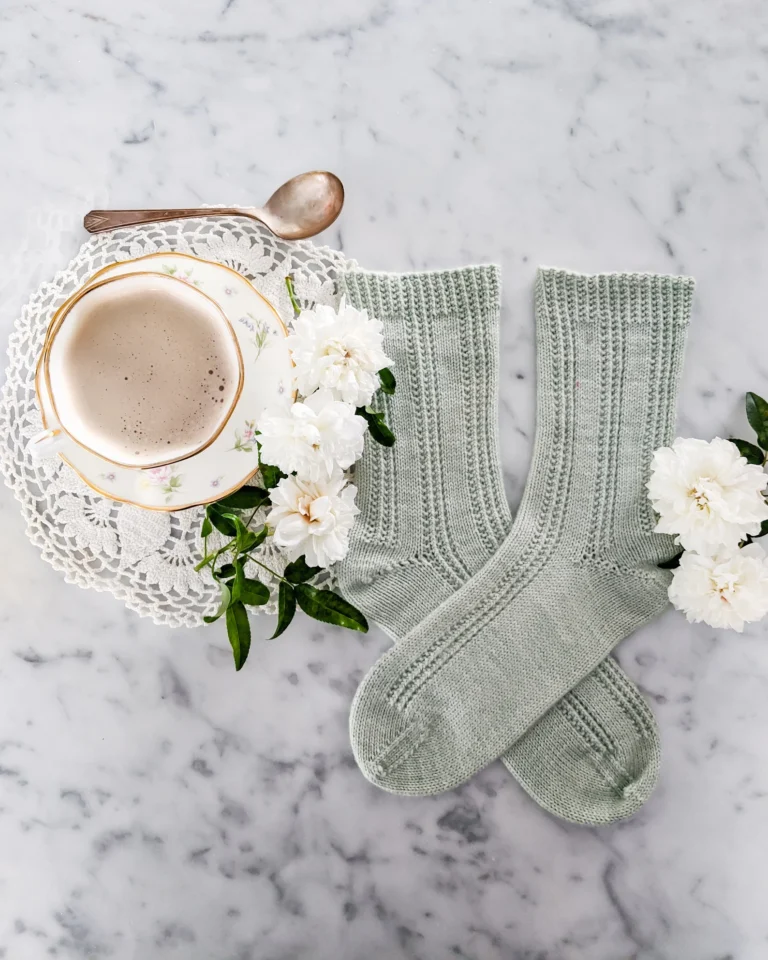I’ve been knitting socks since 2008 and designing them since 2018, so it’s safe to say I’ve knit a lot of sock toes over the years. It wasn’t until I started designing, though, that I really took a look at sock toe construction.
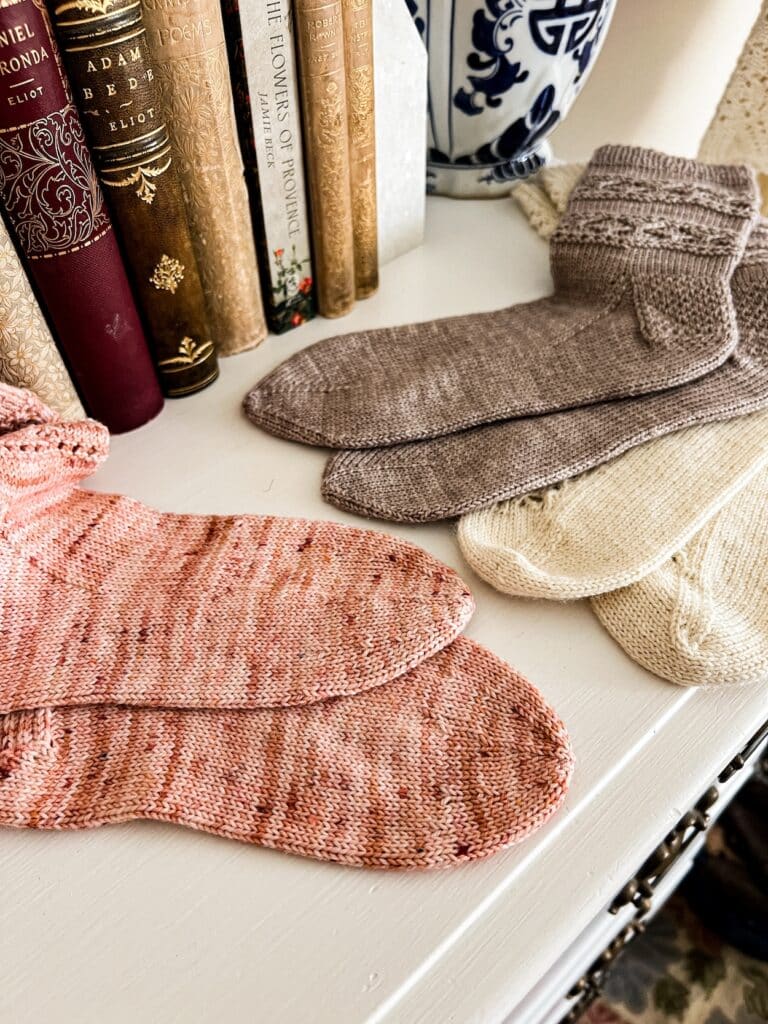
And what I found is that different types of toes work well for different people. For beginners, the classic wedge toe may not always be the best option.
Instead, I like to recommend sock patterns with a round toe for newer sock knitters. This toe construction will feel familiar to knitters who are already comfortable knitting hats, is more forgiving of small mistakes, and has the added benefit of no grafting/Kitchener stitch at the end.
What Is a Round Toe?
A round toe is, as you might guess from its name, a sock toe that has a more rounded shape. It’ll look like a dome rather than the wedge shape that is common in many sock patterns.
Here’s a look at a round toe compared to a wedge toe from the top:

And here’s a look at a round toe compared to a wedge to from the side:
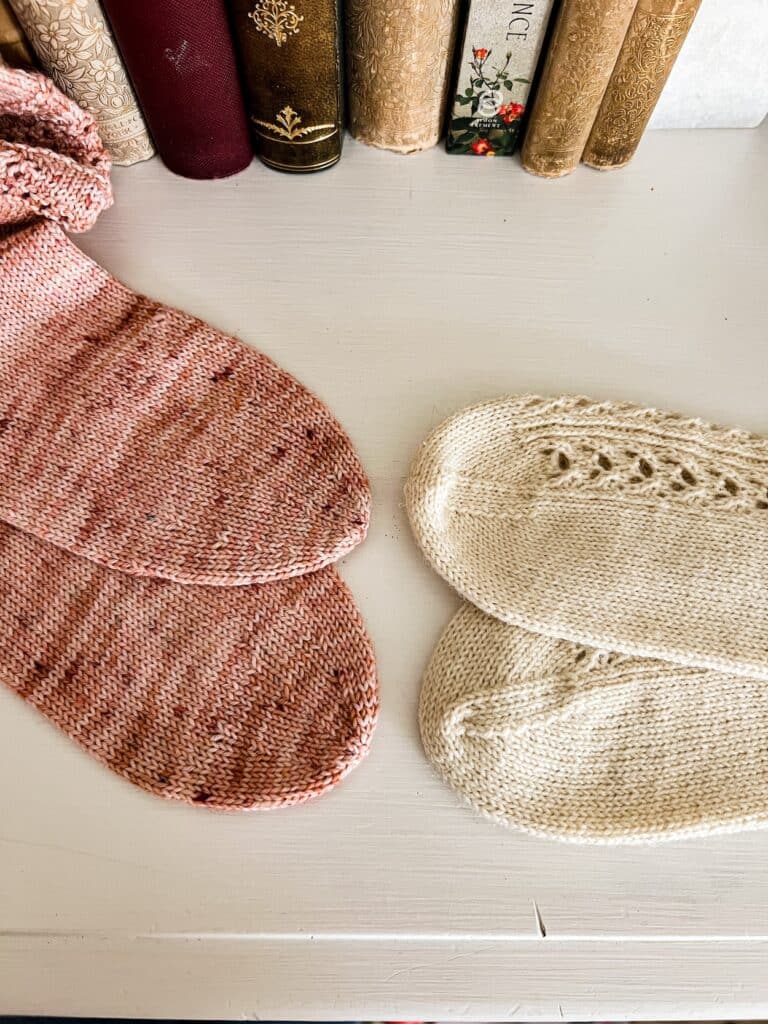
As you can see, the round toe is symmetrical in every direction radiating out from the center of the toe. This leaves a little more wiggle room in the upper part of the toe, so your toes have a bit more room to breathe.
Variations on the round toe can look like stars, umbrella ribs, and spirals. Here’s a look at a star toe I did on another sock:

You can see, when compared to the round toe, that the star toe has more visible decrease lines. This makes it more like the wedge toe when it comes to mistakes being more visible.
Why I Recommend the Round Toe for Newer Sock Knitters
1. The Round Toe is Familiar
Many knitters will start with scarves and then hats before moving on to socks and garments. When knitters who’ve knit hats try out the round toe, they often find it feels surprisingly comfortable.
That’s because the round toe uses a similar ratio of decreases and plain rounds when compared to many hat crowns. As you get closer to closing the toe, you’ll work your decreases closer to each other in the decrease round and have fewer plain rounds between the decrease rounds.
In other words, it’s a hat for your toes. When so much else about sock knitting can feel new and overwhelming, it’s nice to have something familiar.
2. The Round Toe’s Radial Symmetry is Forgiving
In the wedge toe, specific decreases are stacked on top of each other at exact points. Miss a decrease or use the wrong one, and it’ll be visible.
The round toe, on the other hand, has its decreases spread out throughout the decrease round. Without the stacking effect that visually emphasizes decreases and makes mistakes more obvious, this toe construction can help hide a missed decrease, an imperfectly placed decrease, or an incorrect decrease (for example, an SSK instead of a k2tog).
If you’re a newer knitter still working on learning to read their knitting, this toe shape is really helpful if you want to just fudge it a bit rather than go back and fix a mistake.
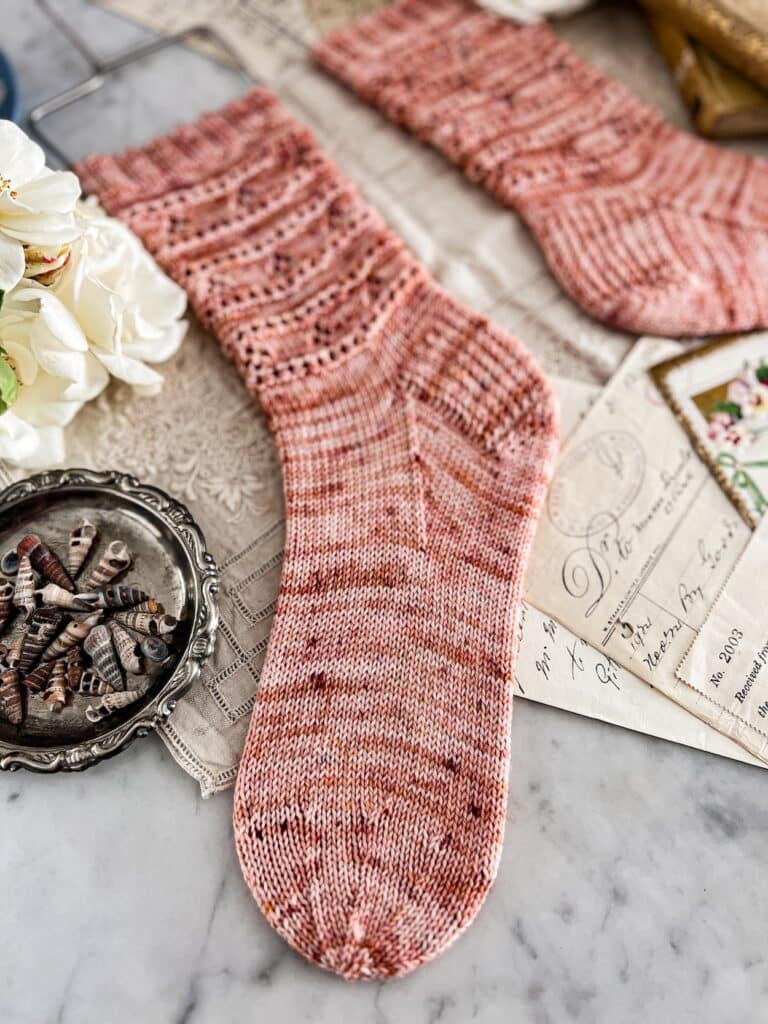
3. It Fits a Lot of Feet Comfortably
The round toe is a really flexible shape that fits a lot of toes well. Many human feet have a longer second or third toe, which the round toe mirrors in its own shape (the center part is the deepest).
What’s more, the round toe can be easily adjusted for longer toes by adding more plain round between decrease rounds. The same can be done for shorter toes by reducing the number of plain rounds between decrease rounds.
4. There’s No Grafting/Kitchener Stitch at the End of the Round Toe
One of the most common complaints I hear about the wedge toe is that, at the end, knitters need to close the toe using a process called grafting (commonly called “Kitchener stitch,” but I prefer “grafting” because it’s more descriptive and precise). Many knitters struggle with this process and tend to avoid it.
With round toes, though, you don’t have to worry about that. Instead, you decrease your toe until you have 8 or fewer stitches on your needles. Then you break the yarn leaving a long tail, grab a darning needle, and thread the long tail through the remaining stitches. Pull it tight to close up the toe.
That’s it! Easy peasy.
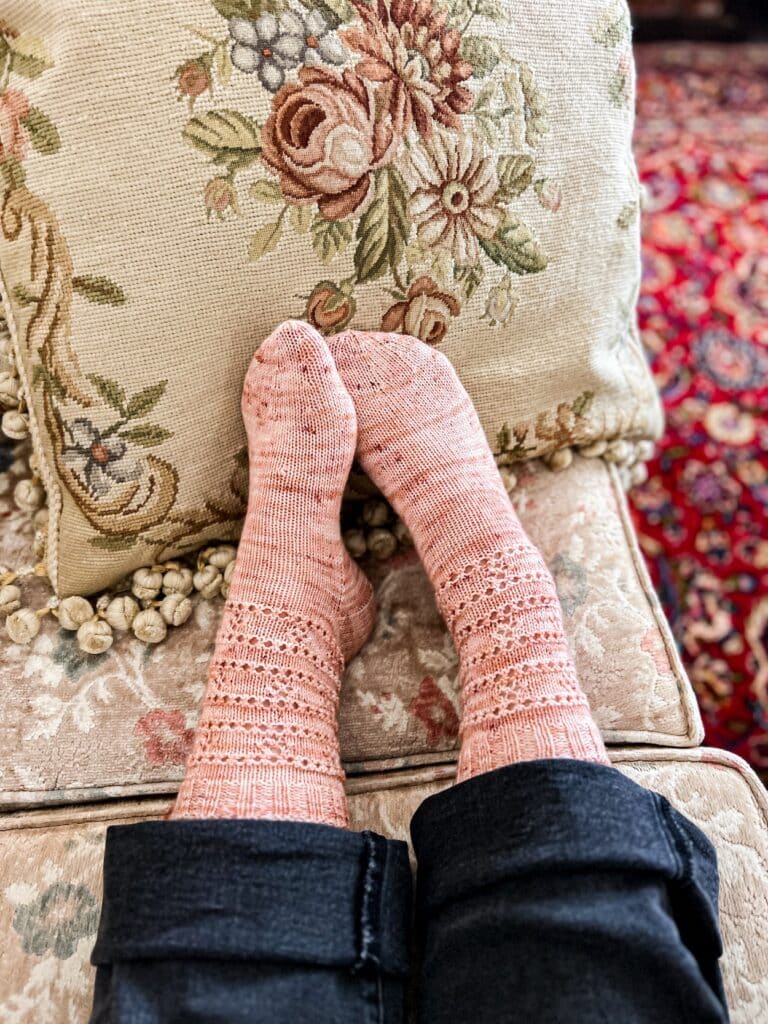
How to Modify or Personalize a Round Toe
Now, just like any other toe construction, the round toe isn’t always perfect right out the gate. You may want to make some modifications to the round toe as you experiment with your socks.
One common adjustment is the number of decrease points. While I prefer a round toe with eight decrease points, you can do six or seven instead if that lines up better with your starting stitch count. If you do fewer decrease points, you will probably also want to have fewer plain rounds between your decrease rounds to keep the toe from getting deeper than you want.
The rate of decrease is also something you can modify. If you want to use the classic 8-decrease method, but want a shallower toe, you can have fewer plain rounds between your decrease rounds. For a deeper toe, add more plain rounds between your decrease rounds.
And finally, if you want a wider tip of the sock, you do have the option to decrease to 12-20 stitches or so and then graft those stitches together. That’ll give you the roominess of the round toe but the width at the tip of the wedge toe. It’s the best of both worlds for some knitters.
You should feel free to experiment with different round toe formulas until you find one that works well for you. Remember, if your gauge changes significantly from project to project, your toe formula might need to be adjusted, too.

When a Round Toe Might Not Be Ideal
Finally, there may be some knitters for whom a round toe is just never going to be a comfortable fit, no matter how much fiddling they do with their formula. For example, knitters with more square toes or whose longest toe is their big toe may find that the round toe sits kind of awkwardly on their feet.
Round toes might also feel snug for knitters with wider feet, at least in their classic formulation. That’s because the distribution of decreases causes the toe to narrow down pretty quickly.
Of course, the wonderful thing about knitting is that it’s infinitely customizable. If one toe shape just doesn’t work for you, you can always try another sock toe. You can even swap out the toes on sock patterns from other designers once you’ve gotten comfortable with your favorite toe construction.
And if you ask me, that’s pretty cool.
Let’s stay connected!
Join my newsletter for 30% off all new releases, regular updates with helpful tips and tricks, first crack at registration for upcoming workshops, exclusive discounts, and more.
Prefer to read without ads? Join my Patreon, which starts at just $1 a month!
Join the A Bee In The Bonnet Facebook Group to participate in knitalongs and other fun community events
Come hang out with me on the A Bee In The Bonnet TikTok
Follow along on the A Bee In The Bonnet Instagram
Get inspired via the A Bee In The Bonnet Pinterest

